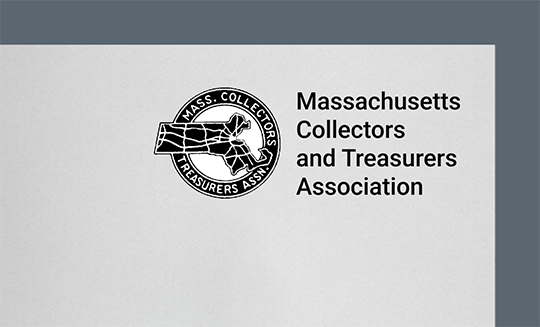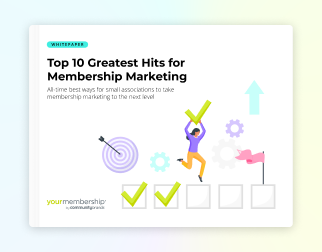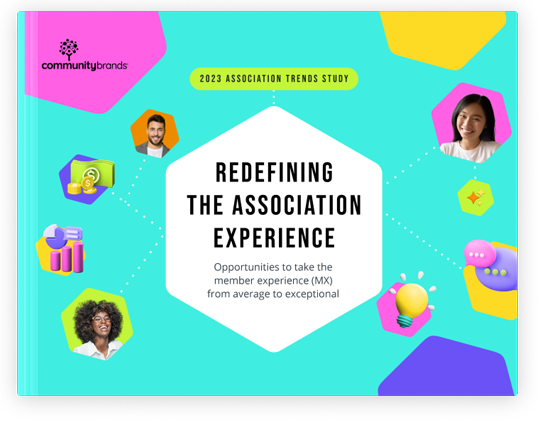When your association has a small staff, planning events can seem like a big challenge. Here are five ways that technology can make your event planning easier.
Hosting events is a great way to deliver the learning and networking benefits your members seek. Events also reinforce your association’s value proposition, helping you retain members and grow your membership base.
Pulling off this important member benefit requires thoughtful preparation for each event. But thorough event planning demands more time than many associations with small staffs can sometimes reasonably manage.
Sound familiar? Not to worry. Using modern event technology built into your association management software (AMS), your association can easily conquer event prep.
Five ways technology can make your small association’s event planning easier
Here are five ways the right AMS solution can make your association’s event planning easier:
1. Understand what your members want.
Analyzing input via pre-conference surveys is a powerful tool for planning outstanding association events. By gathering member opinions, suggestions, and expectations, you’ll have the data needed to set goals for your events and create value throughout all aspects of your events, including:
- Location
- Timing
- Registration
- Lodging
- Speakers
- Session topics
- Special events
2. Recruit volunteers.
Volunteers can be a big help with event planning (and execution!) when your association has a small staff. Volunteers can extend your event planning team and bring the member perspective to your event planning.
To get members to volunteer with your events, you need to ask. And when you ask, it’s important to be specific about what you’re asking members to do. This starts with a clear description of each volunteer position, which should include a title, an objective, and a list of responsibilities.
Once you have descriptions in place, it’s time to start recruiting volunteers. Consider your strategy around:
- Audience – Think about which members likely have the time, skills, and traits required for the position.
- Benefits – Describe what volunteering will do for the volunteer, such as teaching them a skill, having fun, and meeting people.
- Features – These details (when, where, doing what, and with whom) should already be defined in your volunteer position descriptions.
- Message – Your writing and graphical elements for recruitment communications should be clear, simple, compelling, and attractive.
- Communications channels – Think about how and when to use your website, blog articles, social media, targeted email campaigns, text messaging, information sessions, video, and personal invitations to get the right asks to the right people.
3. Plan your event content.
When it comes to developing a plan for event content, you don’t always have to start from scratch. Of course, you don’t want to re-hash the same old content most of your members have already seen, but there are ways to make new content creation easier.
Here are some ideas:
- Ask industry experts to present on recent industry articles or studies they’ve written, or ask them to lead a discussion about a hot industry topic.
- Repackage existing content. For example, combine related topics from blog articles or short webinars into a comprehensive professional development session or workshop.
- Use content ideas from your member survey and look at what your members are talking about in your online member community to inspire ideas for session topics.
4. Create a member and attendee engagement plan.
Making your association’s events engaging might seem challenging when you have a small staff, but even small associations can engage event attendees in big ways.
For example:
- Schedule fun meal-time activities or sessions that provide a break from more intense learning sessions.
- Offer networking events that get attendees talking.
- Offer sessions that include interviews with industry experts or panel discussions about hot topics in your industry, and set aside time for Q&A with the audience.
- Use a mobile event app to engage attendees through surveys, polls, and audience response systems that assist with learning, awareness, and overall participation.
5. Build a sponsorship plan.
Think about a variety of event sponsorship packages you can offer that will appeal to a broad range of companies in your association’s industry or profession.
Some examples might include:
- A booth package with signage at the event tradeshow
- An advertising package with ad placement in conference materials
- A package that includes a special session presentation
- A meals or entertainment sponsorship package
- A combination package that includes multiple sponsor benefits or even a build-your-own sponsor package
- Year-round opportunities that offer event sponsorships plus sponsorships for content, virtual events, and member discounts on products and services. They could also include advertising opportunities via your publications, online job board, online member community, online member directory, social media, and educational events.






